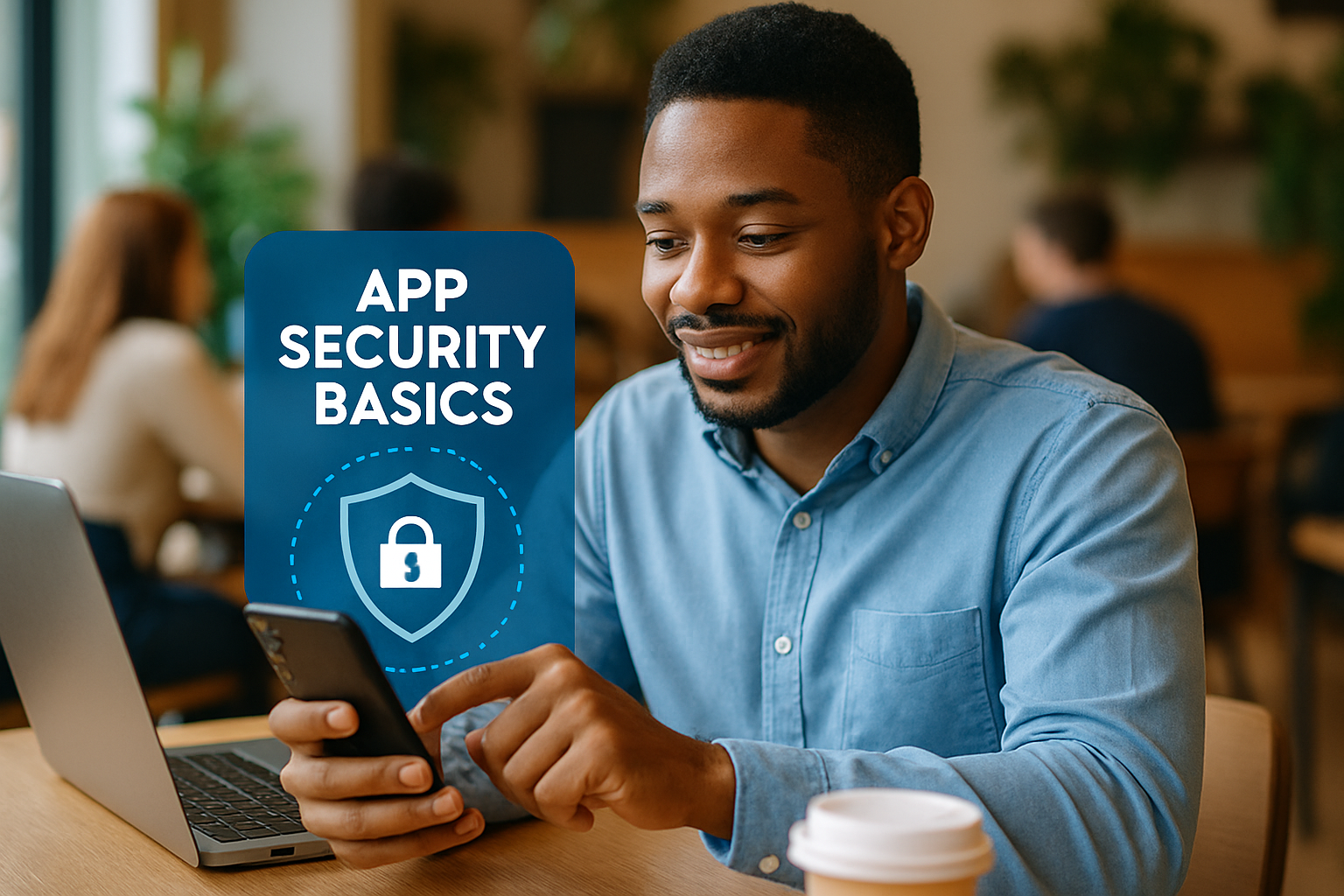
Mobile app security basics
In today’s digitally saturated world, mobile applications are more than tools—they are extensions of ourselves. From managing personal finances to controlling smart homes, our phones have become gateways to vast troves of sensitive data. As such, mobile app security is not a luxury or afterthought. It is a fundamental requirement that every developer, business owner, and user must understand and prioritize.
Understanding the Landscape of Mobile App Security
Every time we download an app, we place a measure of trust in its developers. We expect that our data—our messages, photos, locations, and even biometrics—will be handled with care. Yet, security breaches and privacy violations happen with alarming frequency. These incidents are not always the result of malicious intent; sometimes, they are the product of overlooked basics or misunderstood risks.
Mobile app security refers to the collective measures and practices that protect applications from threats like data leakage, unauthorized access, malware, and more. The stakes are high: a single vulnerability can compromise thousands or even millions of users.
“Mobile security is not just a technical challenge—it’s a human one. It requires empathy, vigilance, and a commitment to protecting people as much as their data.”
Why Mobile Security Matters—Especially Now
The proliferation of smartphones has brought technology to the fingertips of billions, including children, the elderly, and neurodivergent individuals who may interact with technology differently. For women in technology, who are often advocates for inclusive design and robust privacy, mobile security is both a professional responsibility and a personal mission.
For neurodivergent learners—such as those with autism, ADHD, or dyslexia—mobile apps can be life-changing. They offer personalized learning experiences and communication tools. However, these users may be more vulnerable to poorly designed security features or confusing privacy settings. Creating accessible and secure apps is not just good practice; it’s an ethical imperative.
Common Threats Facing Mobile Apps
Understanding the threats is the first step toward mitigating them. Here are some of the most prevalent risks in the mobile ecosystem:
- Insecure Data Storage: Sensitive data stored insecurely on a device can be accessed by other apps or malicious actors.
- Unsecured Communications: Data transmitted without encryption (such as over HTTP instead of HTTPS) can be intercepted in transit.
- Weak Authentication: Poor password policies or missing multi-factor authentication make apps easy targets for attackers.
- Improper Platform Usage: Failing to follow platform-specific security guidelines (Android, iOS) leads to vulnerabilities.
- Code Tampering: Attackers may reverse-engineer apps to inject malicious code or steal intellectual property.
- Insufficient Input Validation: Failing to sanitize user input can result in injection attacks or crashes.
- Excessive Permissions: Apps requesting unnecessary permissions can be vectors for privacy breaches.
Actionable Examples: Spotting and Addressing Risks
Consider a seemingly harmless weather app. If it asks for access to your contacts, microphone, or camera, that’s a red flag. The principle of least privilege says: apps should only request the permissions they genuinely need. Anything more should make you pause and question the intent.
On the technical side, a developer might store user login credentials in plain text within the app’s storage. If another app or an attacker gains access to that storage, all users are at risk. The correct approach is to use the platform’s secure storage facilities—such as Android’s EncryptedSharedPreferences or iOS’s Keychain.
Case Study: The Dangers of Insecure Communication
Imagine a financial app that sends data over an unencrypted connection. An attacker connected to the same public Wi-Fi can intercept login credentials or transaction details using simple, widely available tools. This is why modern apps must enforce HTTPS for all network communications, using up-to-date security certificates.
“Encryption is not optional. It’s the difference between a locked diary and a billboard on the highway.”
Best Practices for Secure Mobile App Development
Whether you are writing code or evaluating an app to use, understanding these best practices is essential:
- Enforce Strong Authentication: Implement multi-factor authentication (MFA) and support biometric logins (like fingerprint or facial recognition) where appropriate.
- Use Secure APIs: Always use secure, authenticated APIs and never hard-code sensitive information like API keys or secrets in the app code.
- Encrypt Sensitive Data: Encrypt data both in transit and at rest. Use platform-specific secure storage for credentials and other sensitive information.
- Minimize Permissions: Request only the permissions your app truly needs and explain to users why each permission is required.
- Follow Platform Guidelines: Both Apple and Google provide extensive security guidelines. Adhering to these will eliminate many common vulnerabilities.
- Regularly Update and Patch: Stay on top of security updates for all libraries and dependencies. Vulnerabilities in third-party code are a common vector for attacks.
- Perform Security Testing: Use both automated tools (like static code analyzers) and manual testing to find vulnerabilities before release.
Security is not a one-time event, but a continuous process. It requires ongoing assessment, monitoring, and adaptation to new threats.
Security for Neurodivergent and Non-Technical Users
Security features must be accessible and understandable to all users. Neurodivergent individuals may find complex password requirements or confusing security prompts overwhelming. Consider implementing:
- Clear, jargon-free instructions for setting up and maintaining security features.
- Accessible design that adheres to WCAG guidelines, including screen reader compatibility and easy navigation.
- Optional visual or auditory cues for important security events (like successful logins or warnings).
- Easy-to-use password managers or alternatives, such as passphrases or biometric authentication, to reduce cognitive load.
“Security should empower users, not intimidate them. The best security features are those that blend seamlessly into daily life.”
Privacy and Data Protection: An Evolving Challenge
Privacy is intertwined with security, but they are not the same. Security is about protecting data from unauthorized access, while privacy is about respecting how data is collected, used, and shared.
Modern privacy regulations—such as the GDPR in Europe and CCPA in California—demand transparency and control. Users have the right to understand what data is collected and to revoke permissions at any time. For developers, this means implementing transparent consent dialogs, giving users easy access to privacy settings, and never collecting more data than necessary.
Real-World Example: Handling User Data Responsibly
Suppose your app collects analytics or crash data. Make it clear to your users what is being collected and why. Offer a simple opt-out. When users feel respected and in control, they are more likely to trust your app and your brand.
For women in technology and neurodivergent users, these practices are not only about compliance—they are about building inclusive technology that recognizes and respects the diversity of user experiences.
Actionable Tips for Users: Protecting Yourself
- Only download apps from trusted sources, like the official App Store or Google Play.
- Review app permissions before installation. If something seems unnecessary, look for alternatives.
- Enable device-level security features, such as screen locks, biometrics, and remote wipe capabilities.
- Keep your device and apps updated to benefit from the latest security patches.
- Use strong, unique passwords for each app, and enable MFA where possible.
- Be cautious with public Wi-Fi; use a VPN if you must access sensitive information on unsecured networks.
Empowering the Next Generation
For students, professionals, and anyone passionate about technology, learning the basics of mobile app security is a powerful step toward digital independence. Security is not just a technical skill—it is a mindset. It is about caring for your own data, respecting the privacy of others, and contributing to a safer, more inclusive digital world.
“When we teach security, we are not just building better apps—we are building better communities.”
Final Thoughts
Mobile app security is a journey, not a destination. The threats will evolve, and so must our defenses. But by embracing best practices, prioritizing accessibility and inclusion, and fostering a culture of respect for privacy, we can build a digital world that empowers everyone—regardless of background, ability, or identity.
Whether you are designing the next breakthrough app, advocating for safer technology, or simply protecting your own digital life, remember: security is a shared responsibility. Together, with knowledge, empathy, and a touch of curiosity, we can keep the promise of mobile technology alive and well for all.


